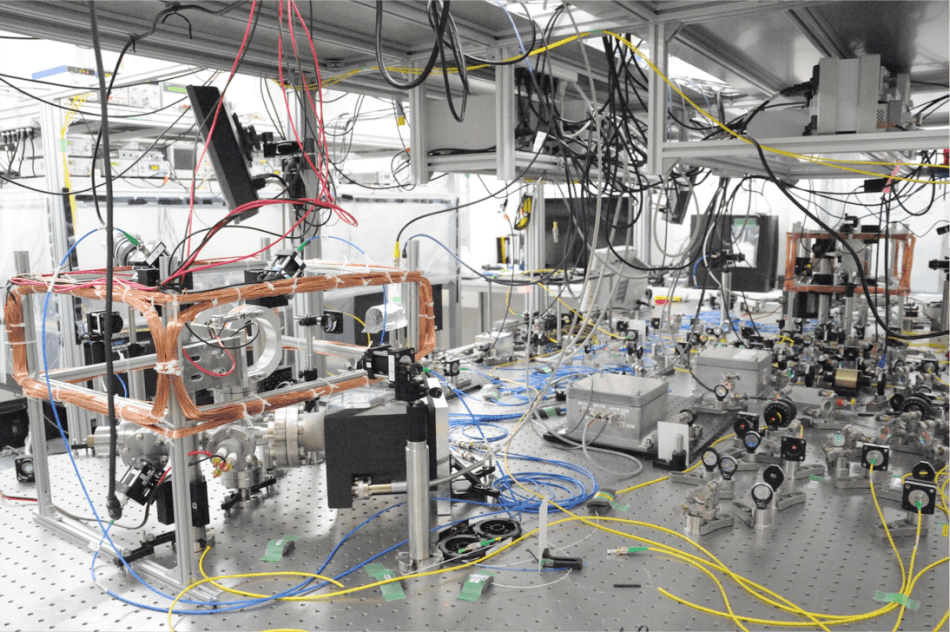Apr 1 2019
A research team from Waseda University, the Japan Science and Technology Agency, and the University of Auckland created an integrated, all-fiber coupled-cavities quantum electrodynamics (QED) system, wherein a meter-long portion of conventional optical fiber flawlessly and coherently links two nanofiber cavity-QED systems.
 Experimental device for an all-fiber, coupled cavities-QED system (Image credit: Aoki Laboratory, Waseda University)
Experimental device for an all-fiber, coupled cavities-QED system (Image credit: Aoki Laboratory, Waseda University)
This kind of system may enable quantum computation, free from the limited computational power that systems today experience, and quantum networks that transfer and process quantum information generated by quantum computers. In the future, such quantum information science technology may help provide breakthroughs that may change our society drastically, such as the discoveries of new materials and pharmaceutical drugs.
Takao Aoki, Study Team Lead and Professor of Applied Physics, Waseda University.
The team’s study was published in the March 11th issue of Nature Communications.
A cavity-QED system is a system wherein photons—elementary quanta of light—and atoms are restricted within an optical resonator and interact with each other in a quantum-mechanical manner. This system has been a prototypical experimental platform for assisting researchers to properly understand and exploit the quantum properties of atoms and photons, as showcased by the award of the Nobel Prize in 2012 to physicist Serge Haroche for his “groundbreaking experimental methods that enable measuring and manipulation of individual quantum systems.” Accordingly, the expectation for cavity-QED systems to attain quantum information science technology has grown.
So as to attain such technology, incorporating many cavity-QED systems with coherent, reversible coupling between each system was essential, but acquiring such coupling with high enough efficiency has rendered this very difficult. Aoki and his team tackled this issue by establishing a system comprising of two nanofiber cavity-QED systems linked to each other in an all-fiber fashion.
In each cavity, an ensemble of several tens of atoms interacts with the cavity field through the evanescent field of a nanofiber, both ends of which are connected to standard optical fibers through tapered regions and sandwiched by a pair of fiber-Bragg-grating mirrors. Multiple resonators can be connected with minimal losses using additional, standard optical fiber, making the coherent, coupled dynamics of the two nanofiber cavity QED systems possible.
Takao Aoki, Study Team Lead and Professor of Applied Physics, Waseda University.
This allowed the team to perceive a reversible interaction between atoms and delocalized photons divided by unparalleled distances of up to two meters, a first in any similar type quantum optical system.
Aoki says, “Our achievement is an important step towards the physical implementation of cavity QED-based distributed quantum computation and a quantum network, where a large number of cavity QED systems are coherently connected by low-loss fiber channels. In such systems, quantum entanglement over the whole network can be created deterministically, instead of probabilistically.”
Their system also makes the way for the analysis of many-body physics—the collective behavior of interacting particles in big numbers—with photons and atoms in a network of cavity QED systems, including occurrences such as quantum phase transitions of light.
The team is currently performing technical improvements to the system to spread their work to the development of a fiber network of coherently coupled, single-atom cavity QED systems. This includes decrease of unrestrained losses in the cavities, active stabilization of the cavity resonance frequencies, and extension of the lifespans of the atoms in the traps that keep them near the nanofibers.